Bydgoszcz 2024-01-19
EMU Pesa Elf EN76 = 22WE.
EMU Pesa Elf, Pesa Acatus II and Pesa Acatus Plus.
Pesa Elf trains are Polish electric multiple units adapted for regional traffic. The trains have been built since 2010 at the Polish PESA factory in Bydgoszcz. "Elf" is an acronym for the English phrase electric low floor. Pesa Elf trains are produced with various numbers of cars, from two to six. The equipment, arrangement of seats, number of toilets, etc. also differ.
The Elf train family includes the following models: Type EN62 = 21WE, Type EN76 = 22WE, Type EN96 = 34WE and 27WE for SKM Warszaw. In addition, ETZ trains marked Acatus II and Acatus Plus were built. Type EN77 = 32WE Acatus II - 4-car. Type EN64 = 40WE Acatus Plus - 3-car. Type EN99 = 41WE Actus Plus - 2-wagon. By 2020, over 120 Pesa Elf trains had been produced.
PESA Elf trains are powered by 3 kV DC electric traction. The width of the train is 2.88 m, the height is 4.28 m, the length depends on the number of wagons. The design speed of Elf trains is 160 km/h.
History of Pesa Elf trains.
The competitor of the PESA factory in Bydgoszcz was and is the second Polish company NEWAG from Nowy Sącz. But this competition has a positive impact on the quality of Polish structures and passenger satisfaction. In 1998, Pesa was deeply restructured and began building diesel passenger cars. In 2004, the factory undertook to build the first EMUs for the Warsaw Commuter Railway. It was a type 13WE (EN95) train. Despite plans to purchase 10 units, production was completed with one train. In 2006, ETZ 15WE was produced, and in 2007, ETZ 16WEk. Both trains were also built in only one copy.
However, carriers' interest in new ETZ trains was increasing. There has been cooperation between producers and users. Carriers wanted trains for quick passenger boarding, and as a result, with a low floor, which makes it easier to get on and off. Additionally, more and more travelers carried bicycles, strollers and wheelchairs. The plant in Bydgoszcz designed the Acatus train, which is designed for platforms with a height of 0.55 - 0.76 m, from the rail head. The train does not have any boarding steps. An Elf train was also designed, which has access steps and is intended for lower platforms. About 150 engineers and scientists from Pesa, subcontractors and scientific institutions participated in the program. Foreign solutions were also looked at.
In December 2009, before the Elf train was ready, the first contract for the delivery of 8 ETZ trains for the Silesian Voivodeship was signed. In the following years, further contracts were signed. The Elf train was shown in 2010 during the InnoTrans fair in Berlin. The EN76-001 train, built for the Silesian Voivodeship, was then presented.
Pesa Elf design.
Pesa Elf trains are standard gauge ETZ. They are powered by electric traction with a voltage of 3 kV DC. But it is also possible to produce trains powered by alternating current with a voltage of 25 kV or 15 kV. The width of the train is 2.88 m, the height is 4.28 m, the length depends on the number of wagons. The design speed of Elf trains is 160 km/h. The trains are low-floor and intended for regional traffic.
The wagon bodies have a three-dimensional structure made of closed profile steel. The skin is 1.5 mm thick and made of steel, while the front of the vehicle is made of plastics.
Trains are available in 2, 3, 4 and 6-car systems. The Bydgoszcz plant also offers a 10-car train. Trains can be combined to form multiple lines. Each carriage may have one to three doors on each side.
For the 4-car version, the powered bogies are located at both ends of the train. The 6-car versions have additional drive bogies with the end of the third car and the beginning of the fourth car. There are no Jacobs carts there. The bogies between the wagons are rolling, non-powered bogies. Each trolley has double springs. The first stage is steel springs. The second stage is pneumatic cushions. Hydraulic shock absorbers were installed to additionally dampen vibrations. The driving and rolling carriages are designed and manufactured by Pesa.
TMF 59-39-4 (500 KW) or TMF 50-29-4 (400 KW) engines were used. The engines are of Austrian production. The electric motors are controlled by an inverter. Stemmann current collectors. Knorr-Bremse brake system.
The equipment is tailored to the customer's needs. Trains are made as Class 2. The number and arrangement of seats may vary. The seats may recline. There are 1 or 2 toilets on the train, built in a closed system. There is always a toilet for disabled people and people with small children, which has larger dimensions. SKM Warszawa ordered trains without toilets due to short distances and travel times. Near the areas for disabled people and people with small children in strollers, there are entrance doors equipped with ramps. Many Elf trains have positions for a driver's assistant, so the train can run at a scheduled speed of over 130 km/h.
Pesa Elf 22WE or 22WEa. The 22WE version has 4 wagons and is intended for regional traffic.
EN76-034 = 22WEa.
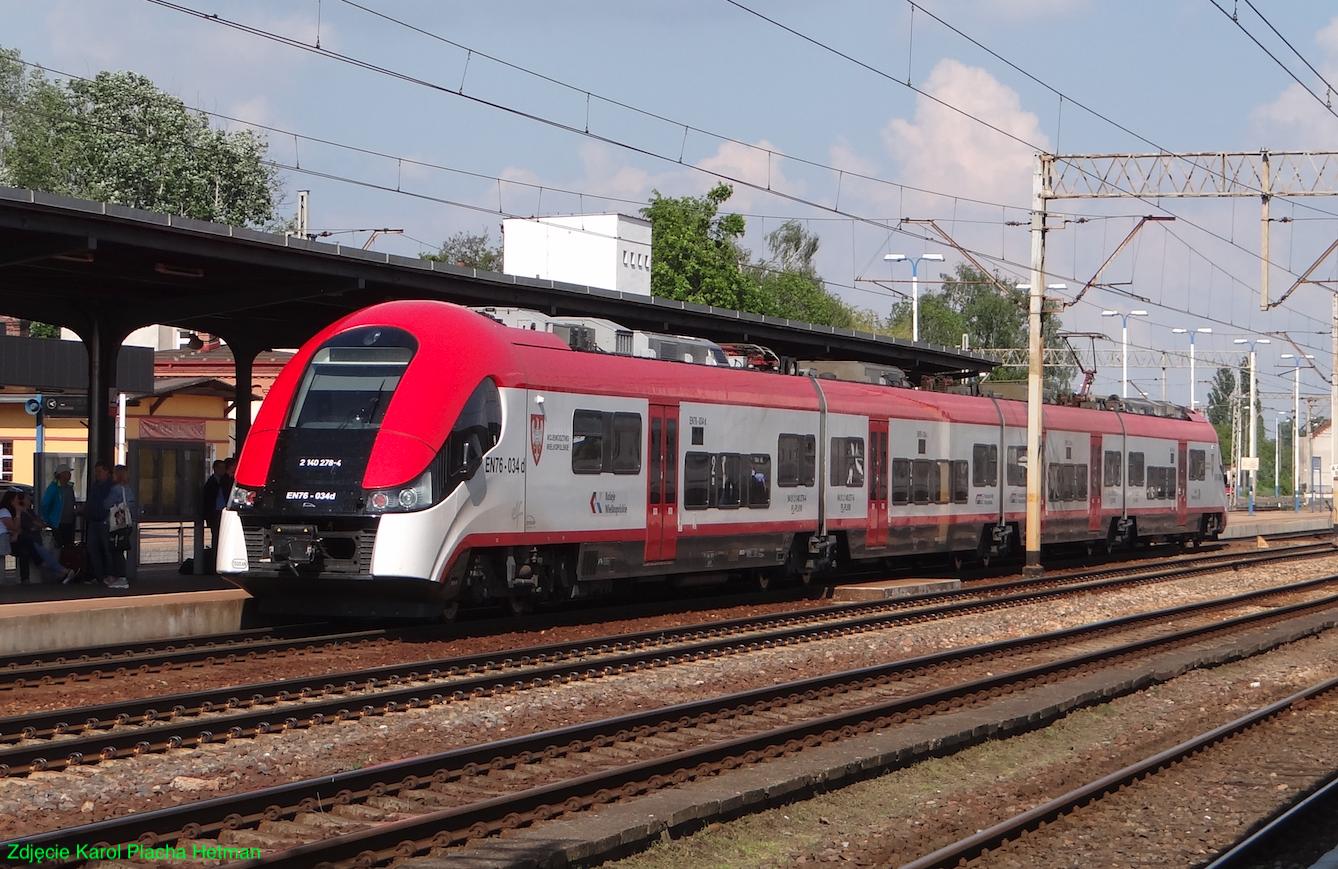
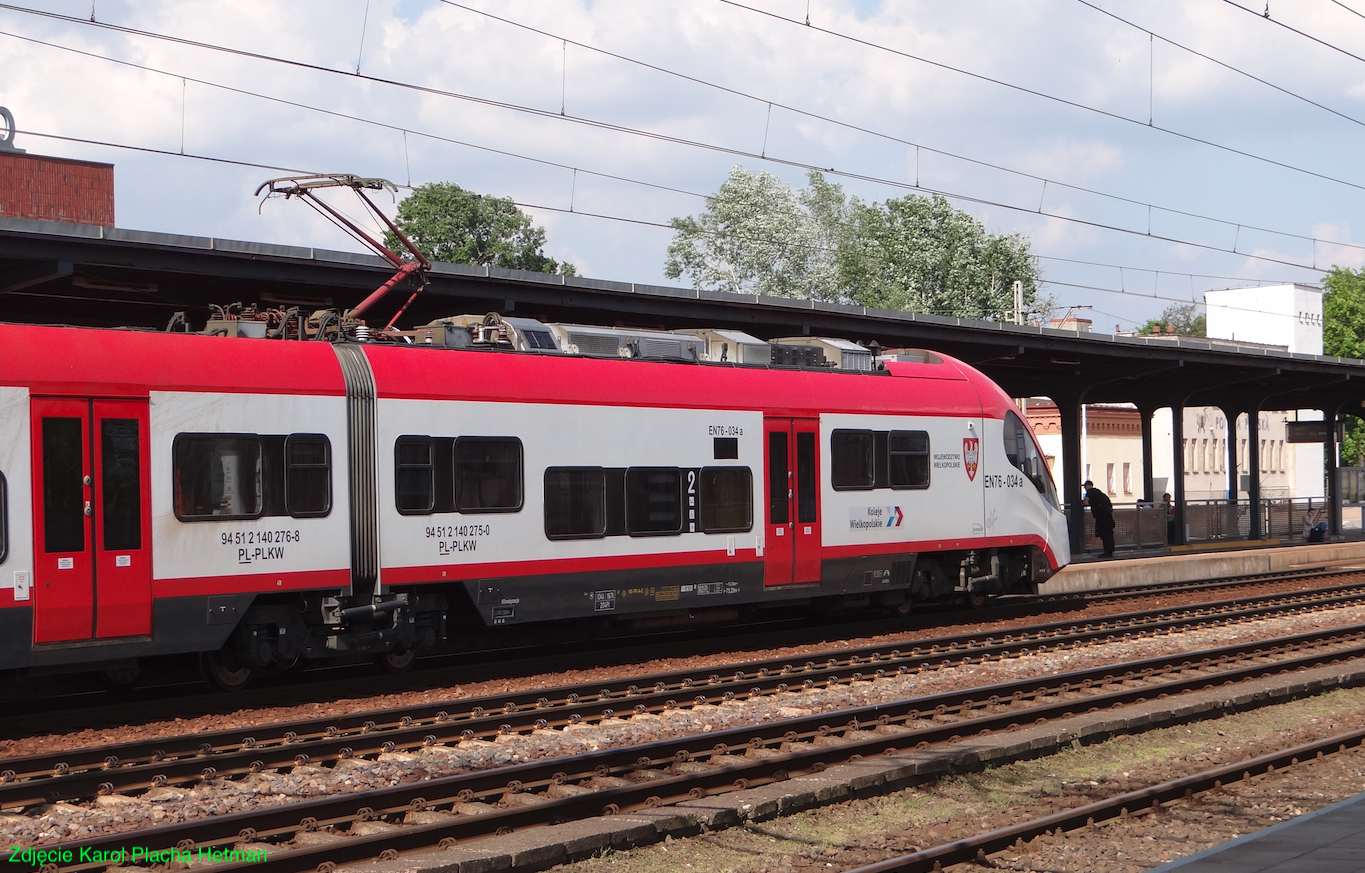
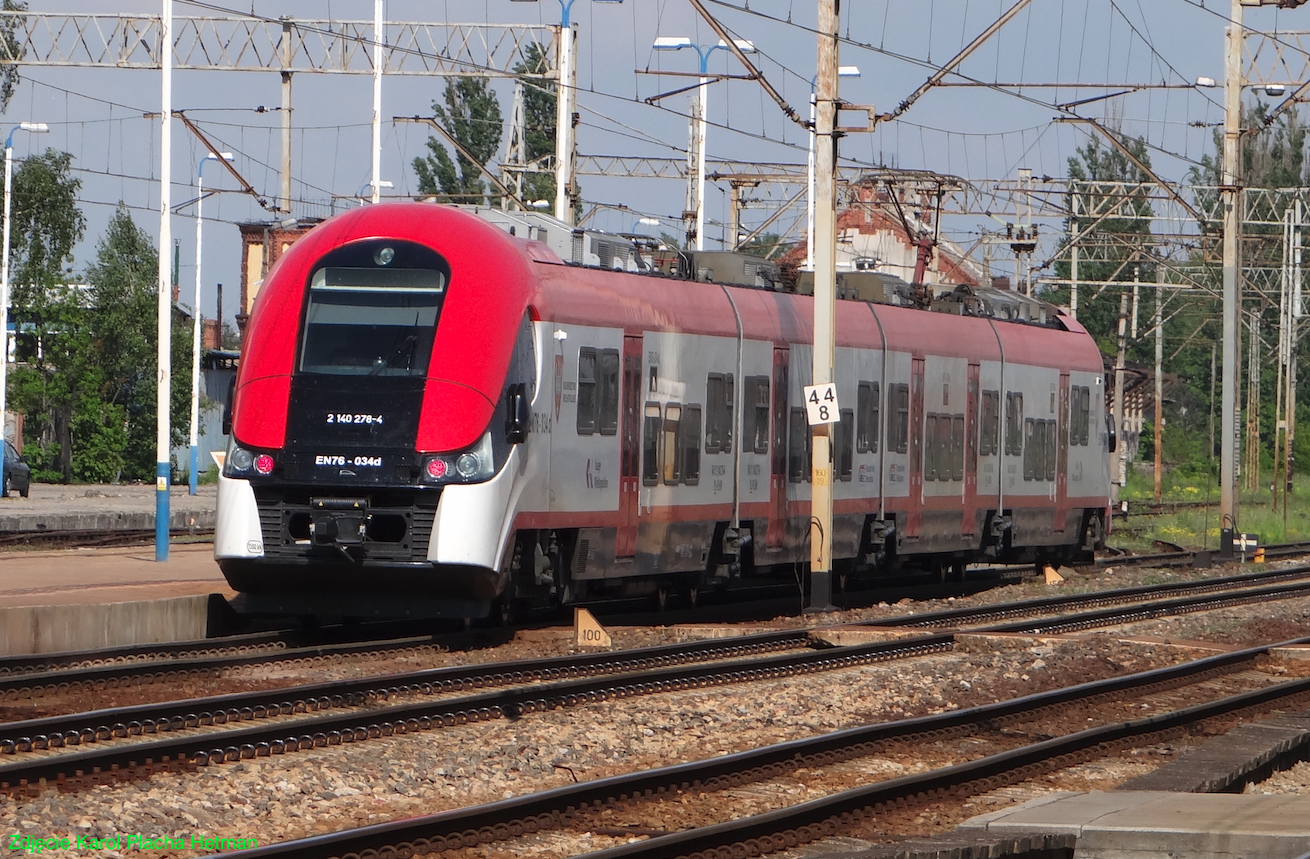
The EN76-034 = 22WEa train was produced in 2013 for Koleje Wielkopolskie. Red and white painting. The seats are upholstered with red material. In October 2018, the train underwent P4 level repairs. The train can be found on the Poznań Główny - Gniezno route.
EN76-053 = 22WEa.
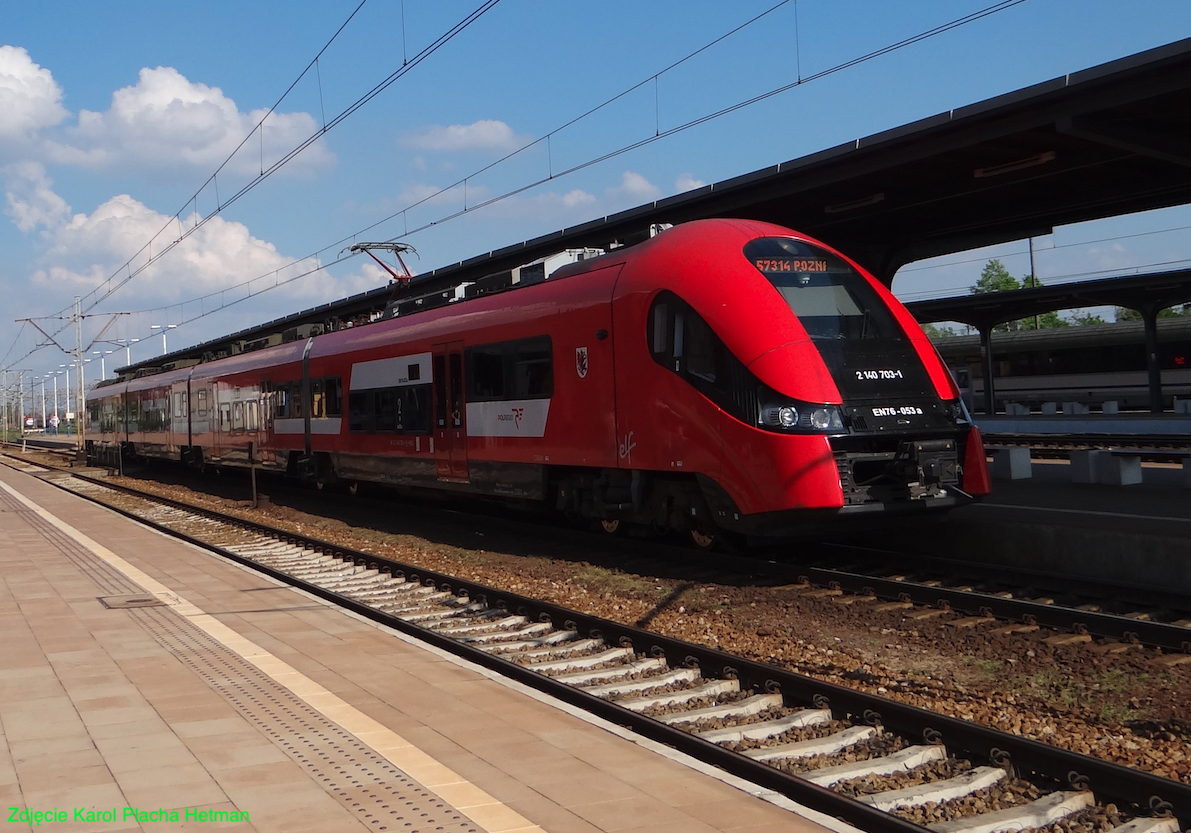
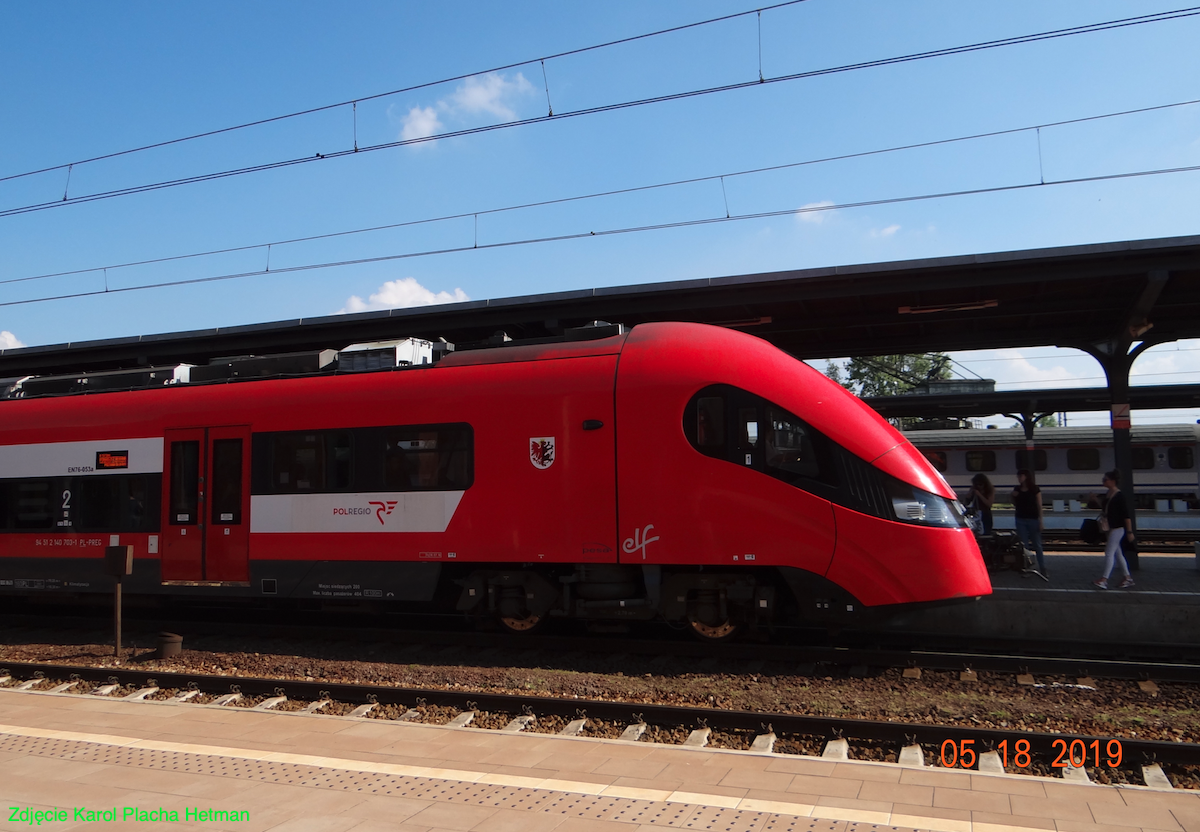
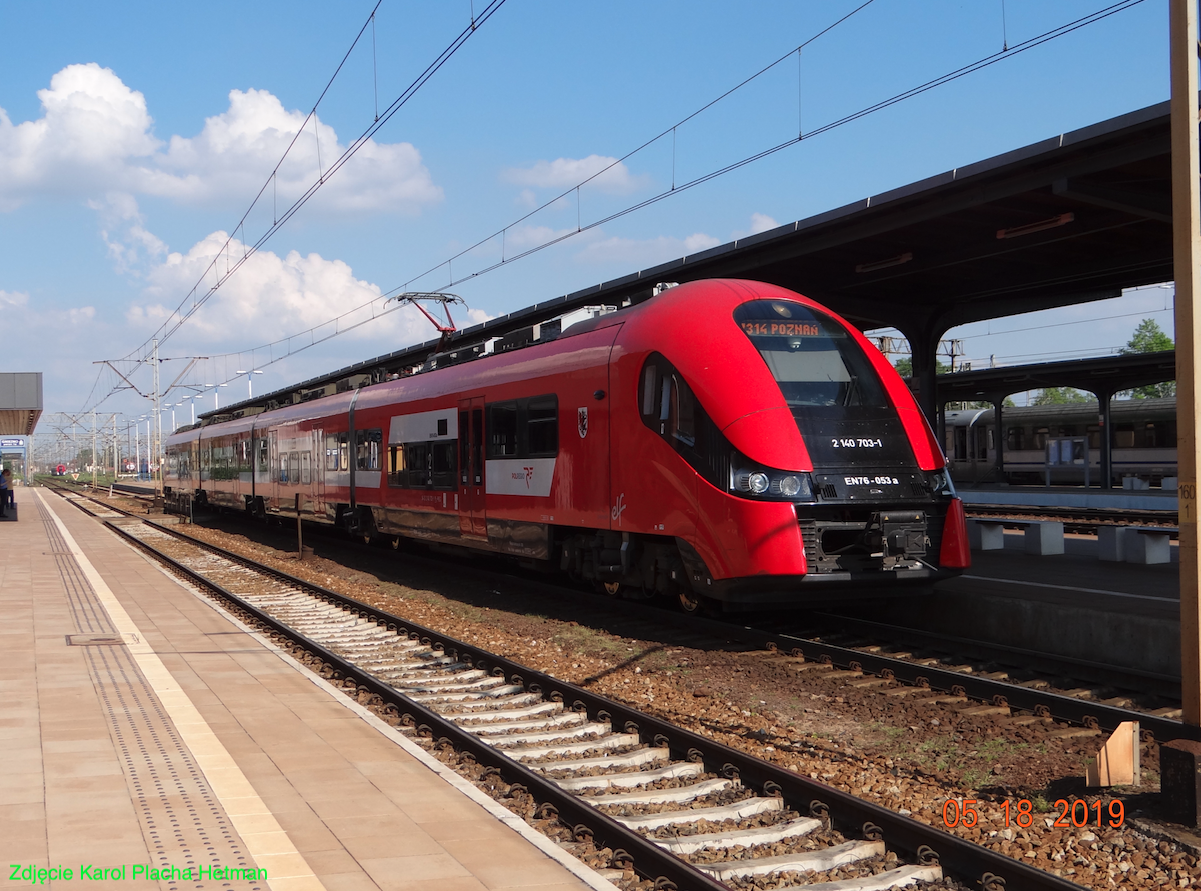
The EN76-053 = 22WEa train, factory number E742BNA109, was produced in 2016, for PolRegio; Kujawsko-Pomorskie Branch based in Bydgoszcz. Red-white-red painting. Armchairs upholstered with red fabric. In 2023, the P4 level was repaired. The train can be found on the Bydgoszcz Główna - Gdynia Główna route.
Written by Karol Placha Hetman
